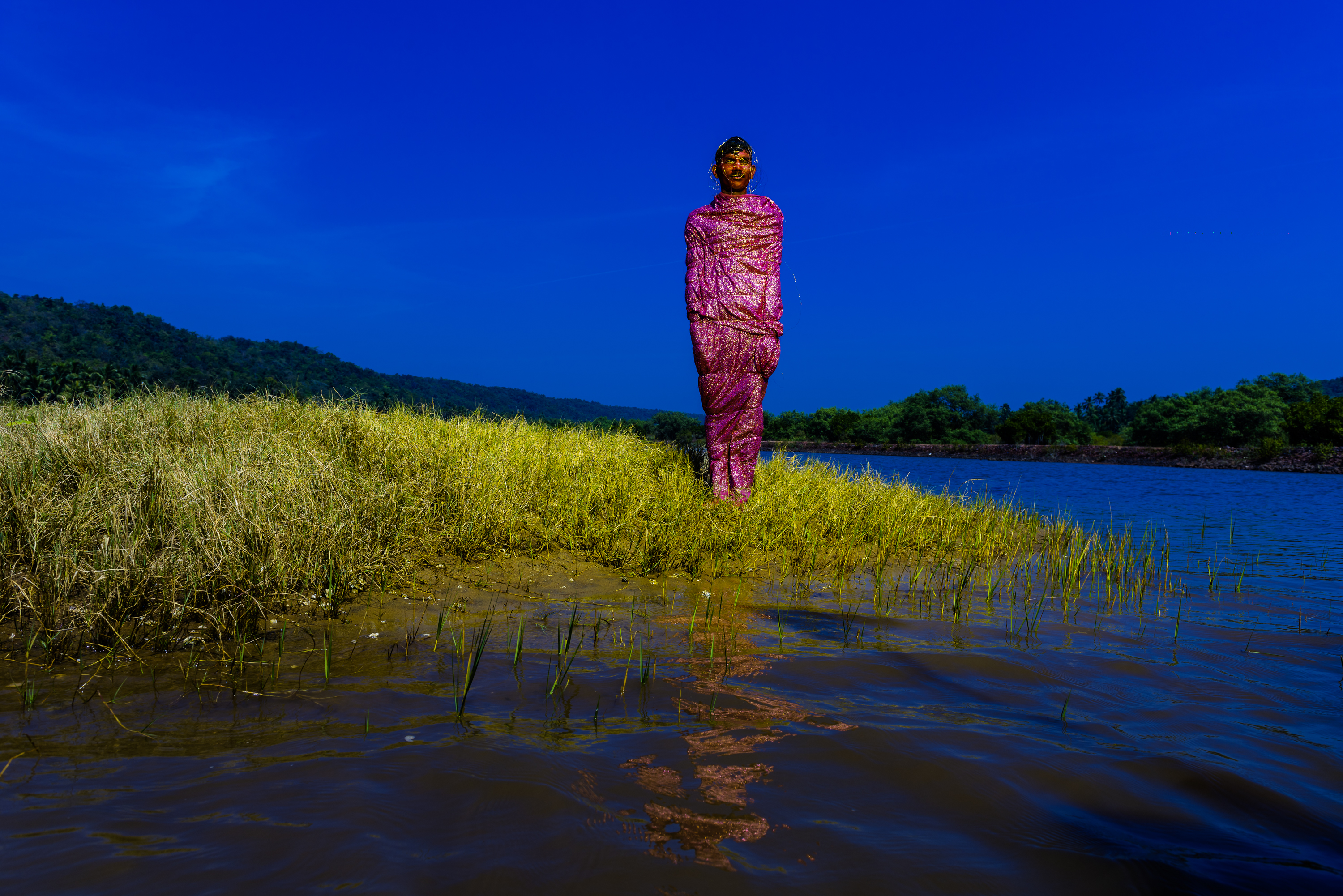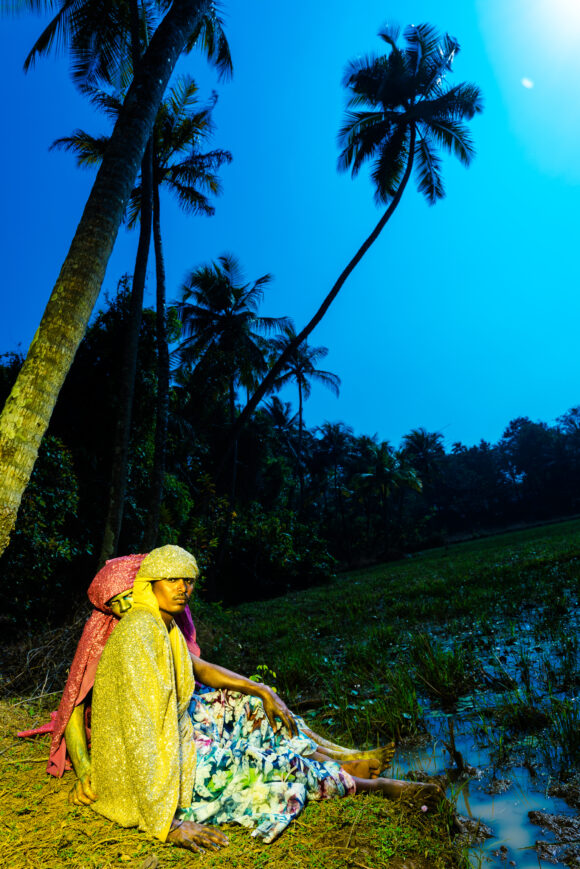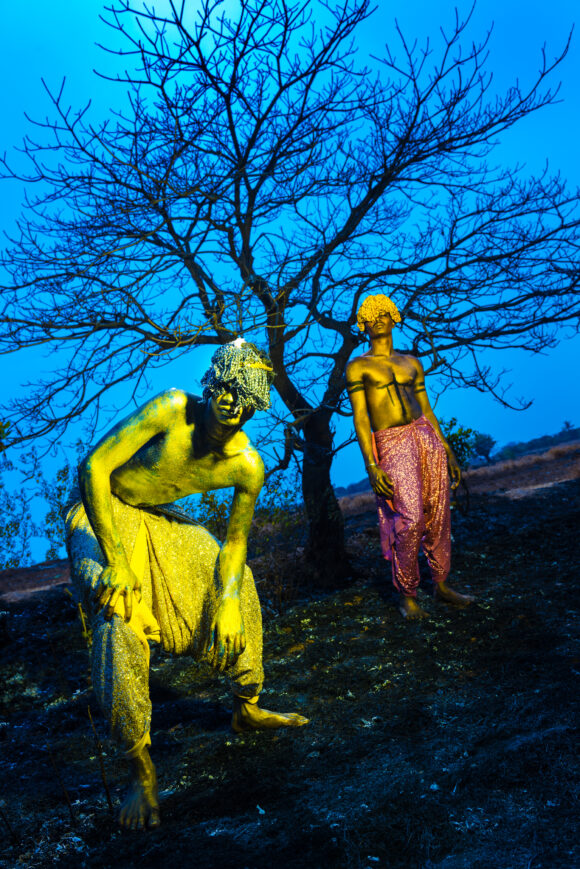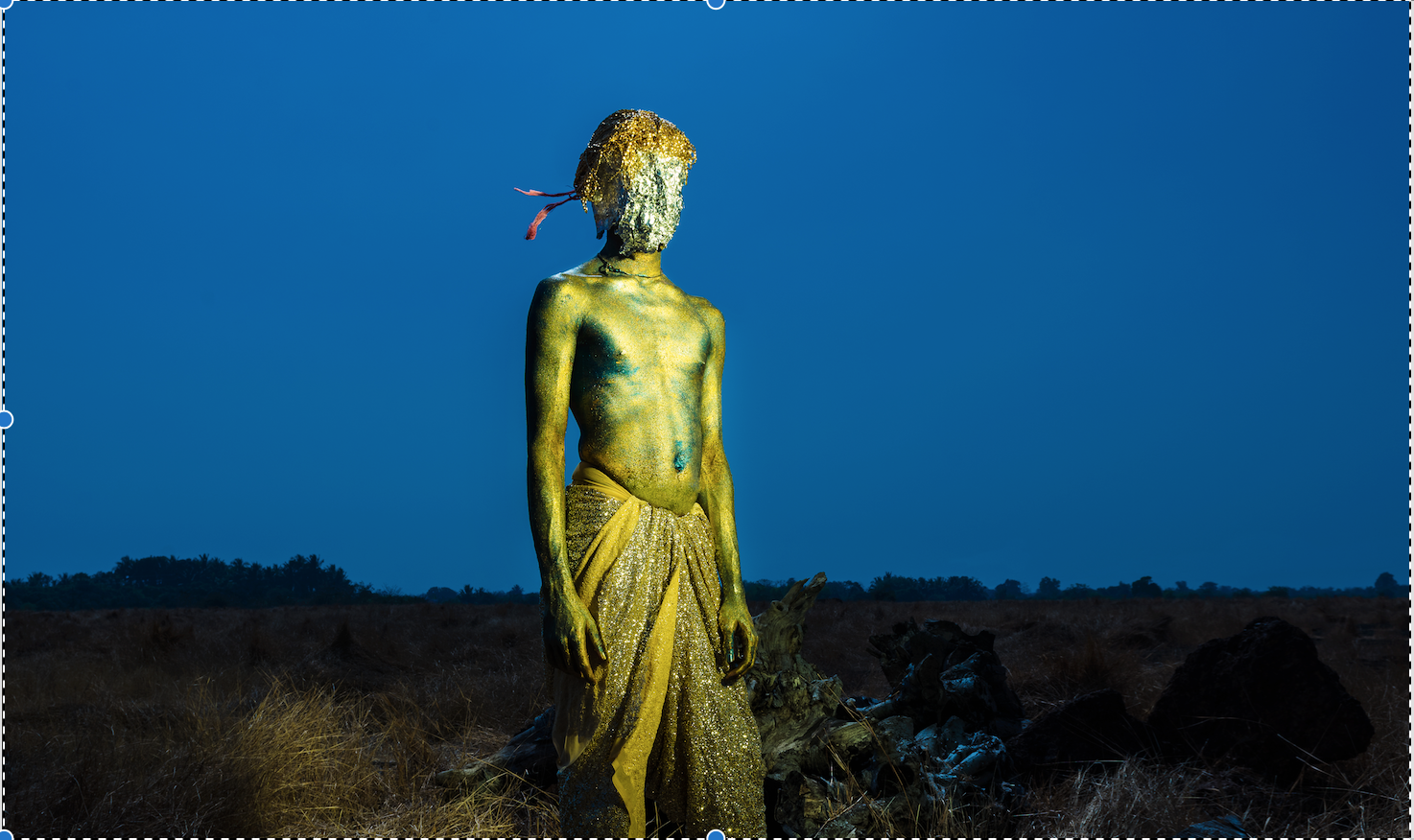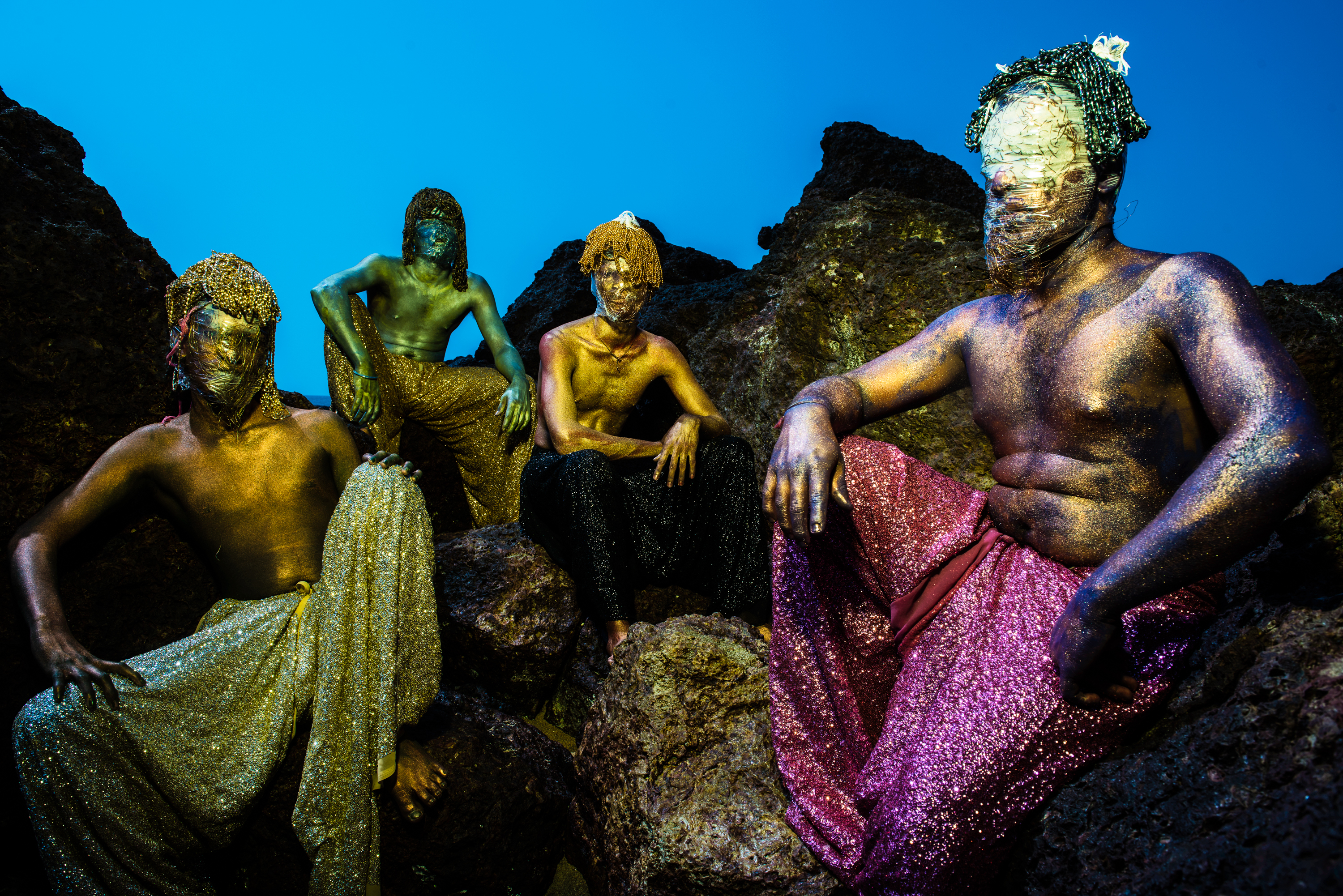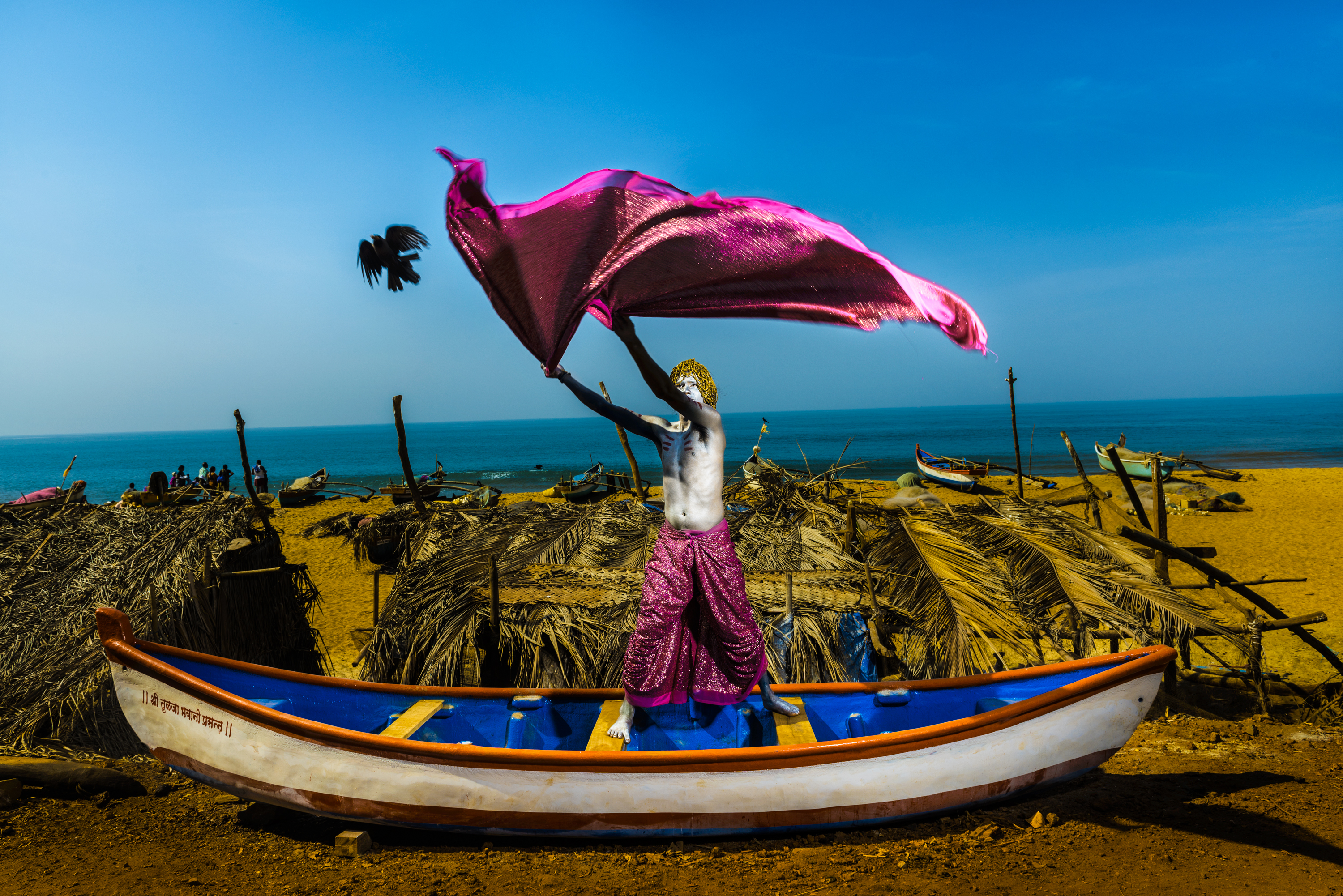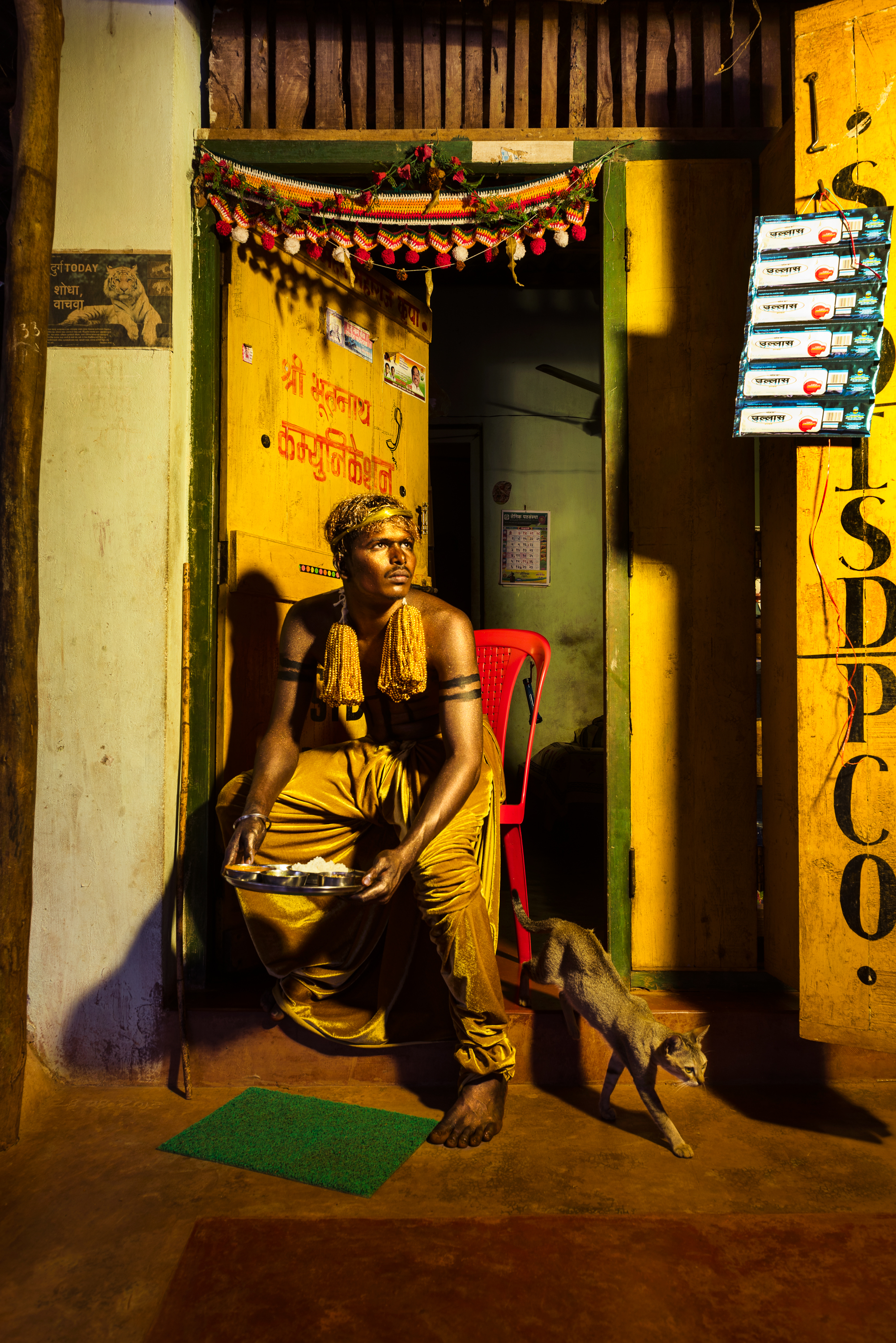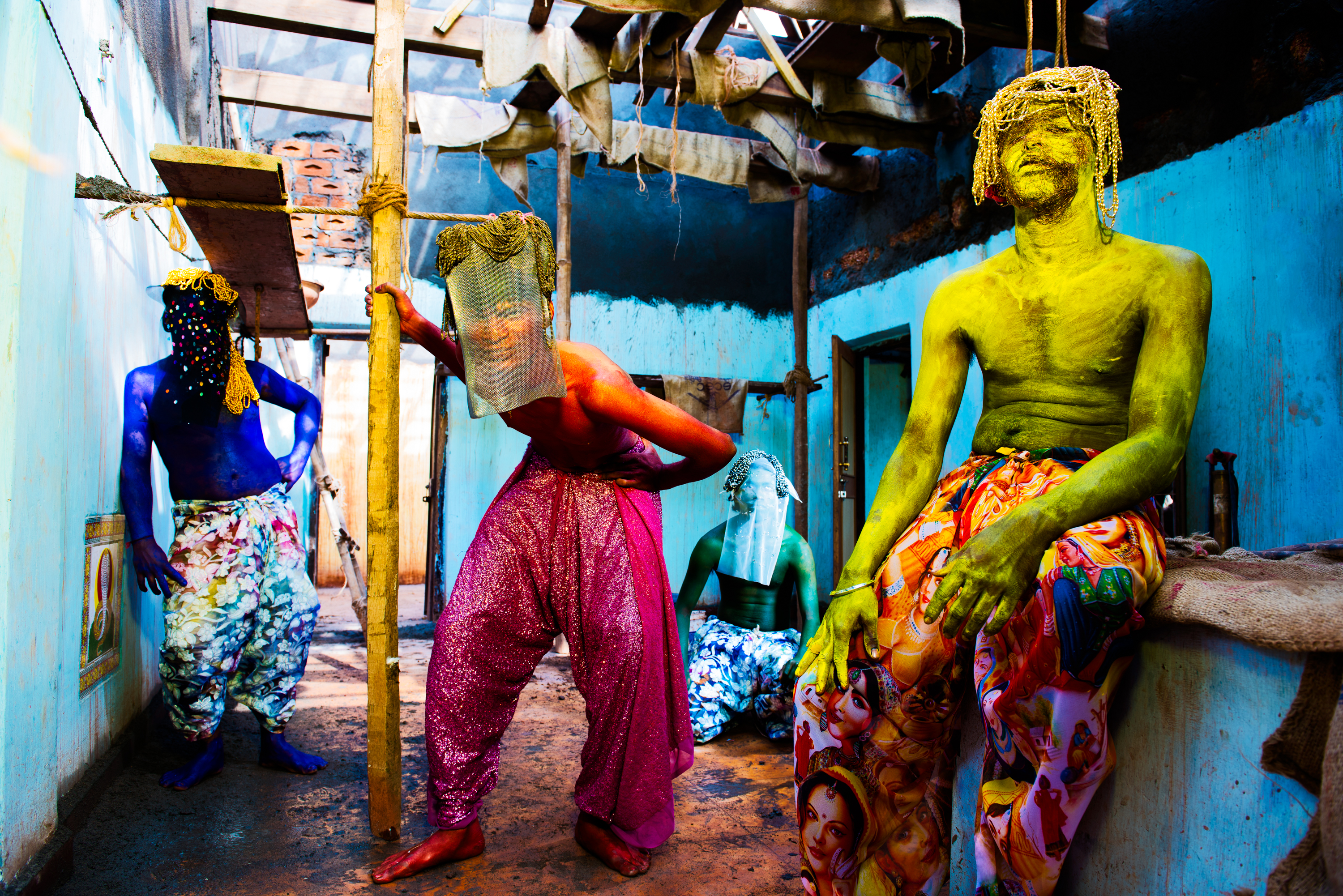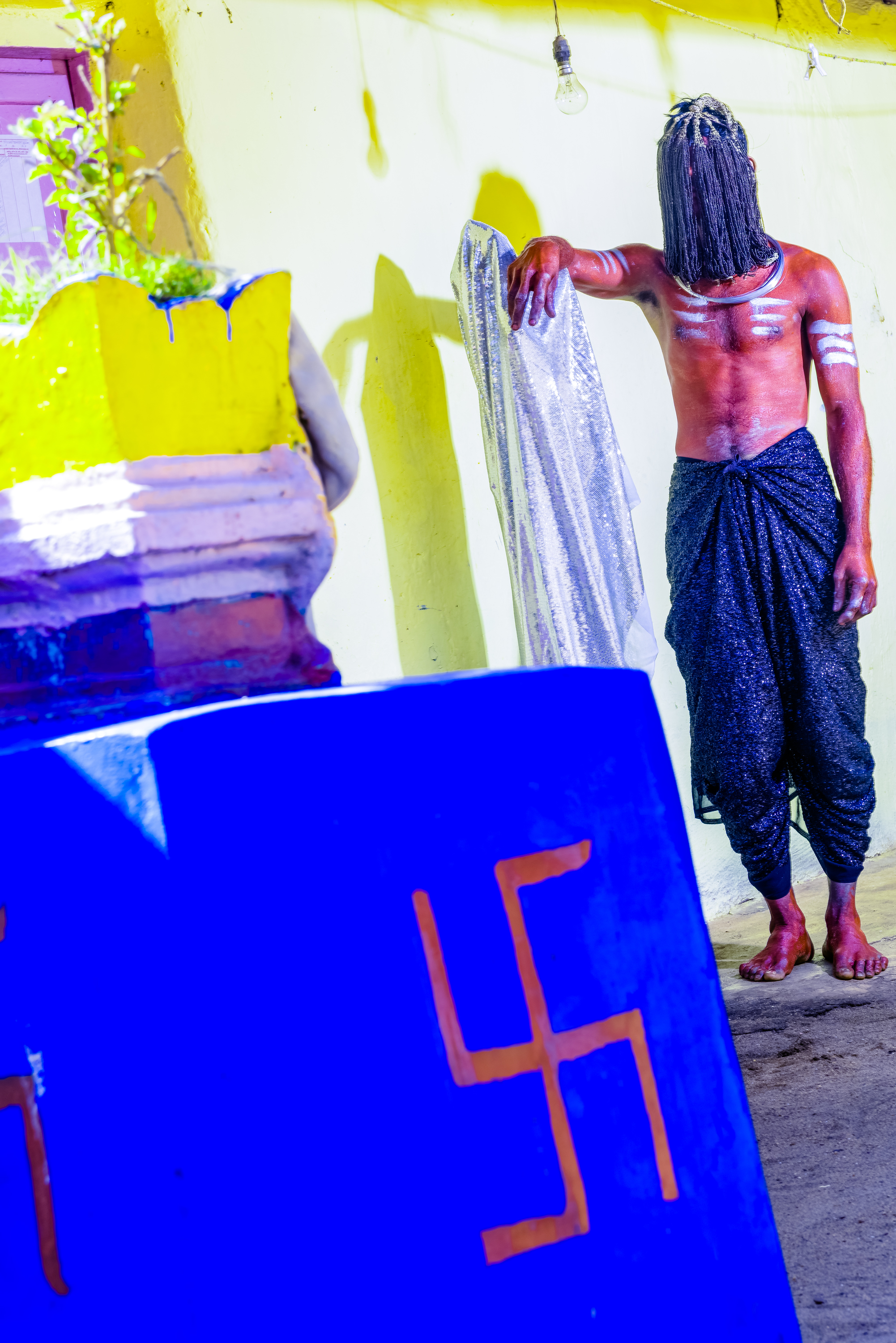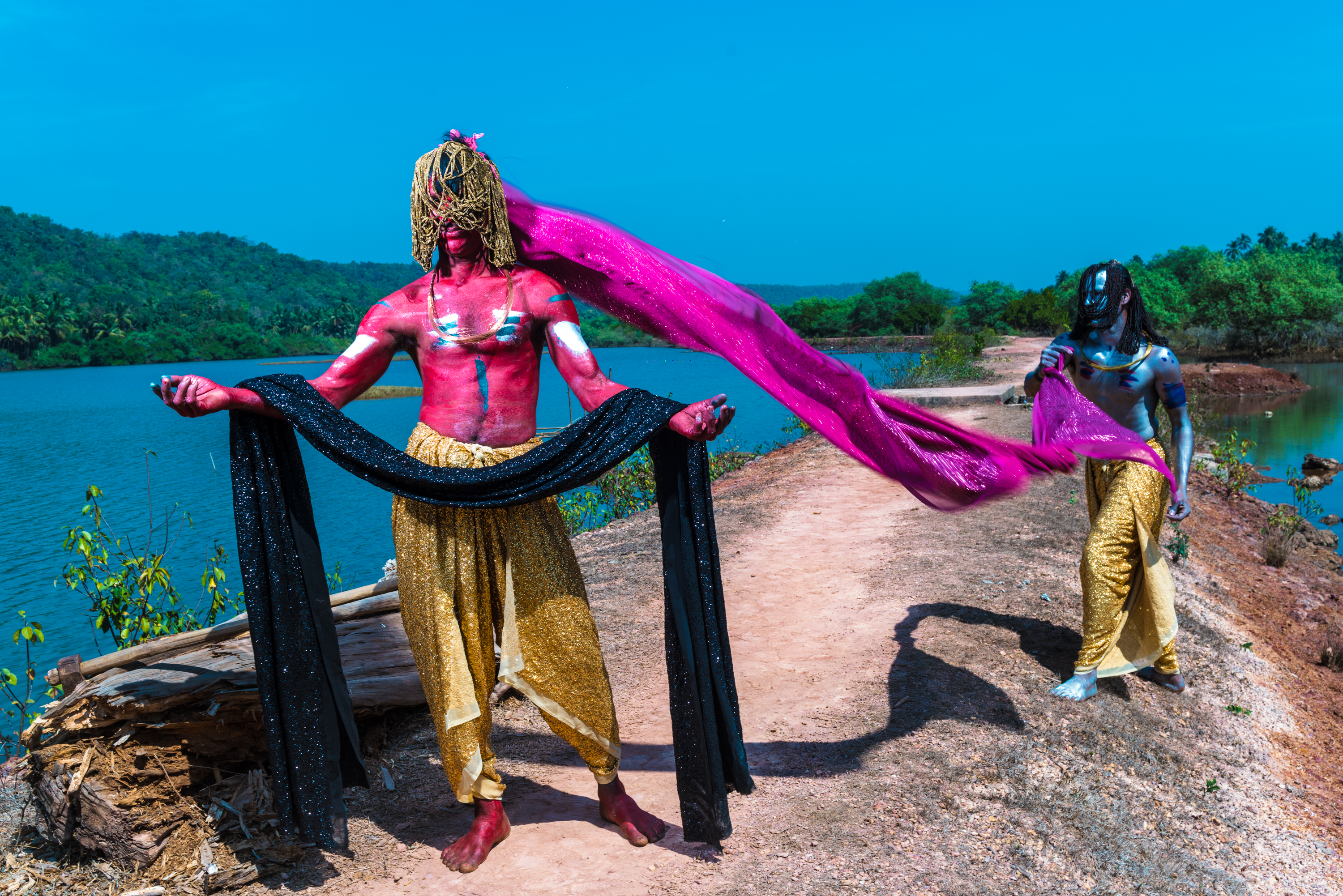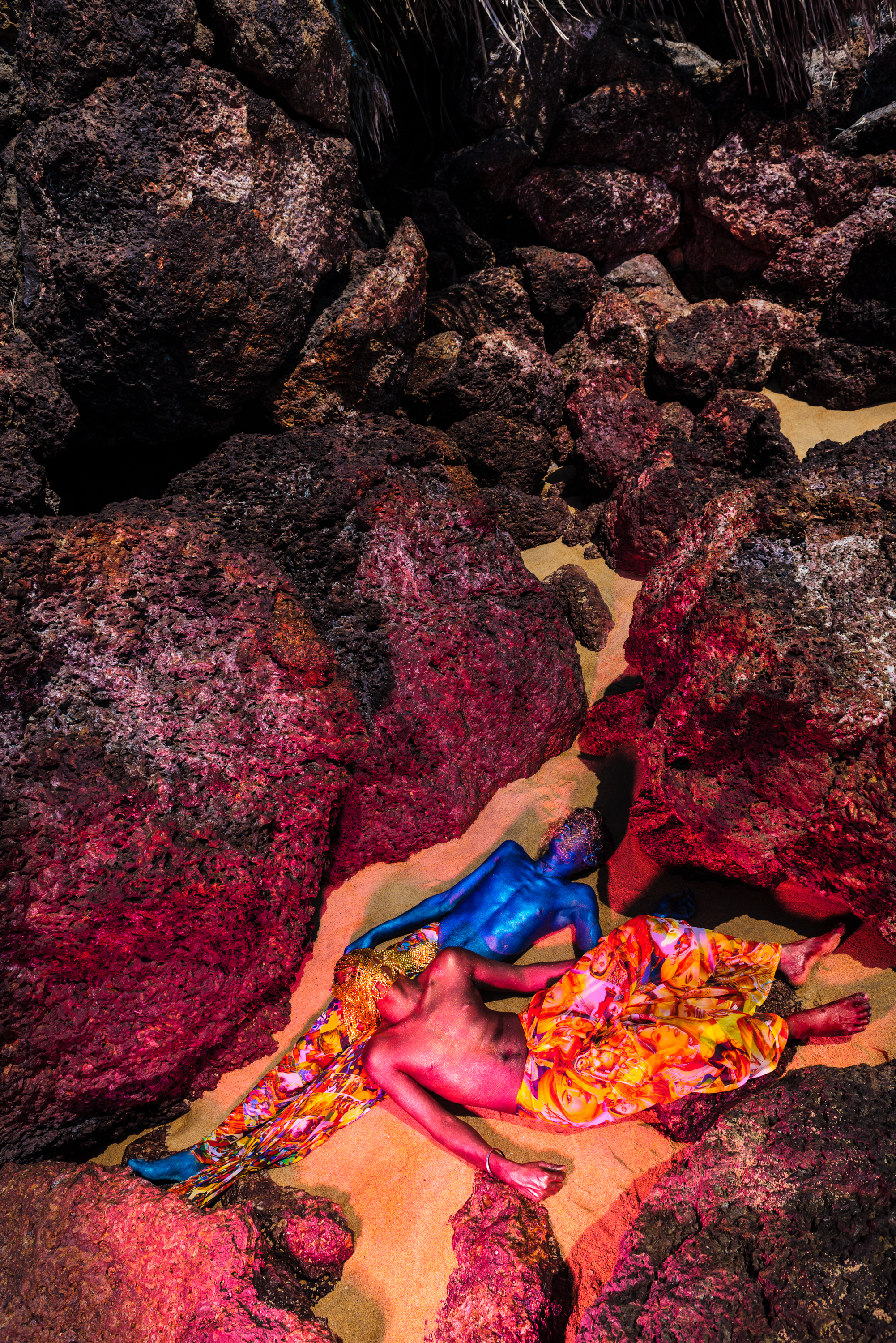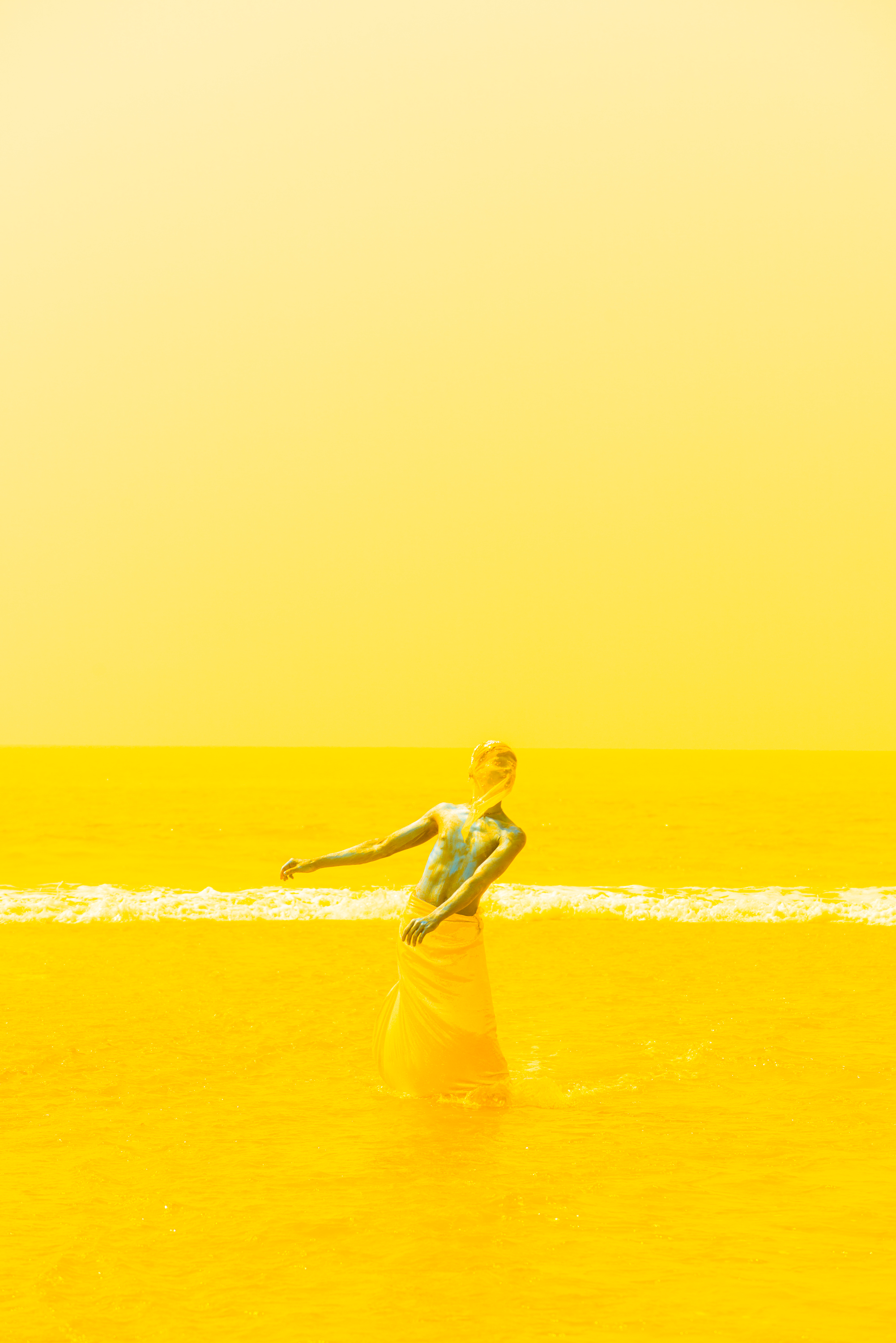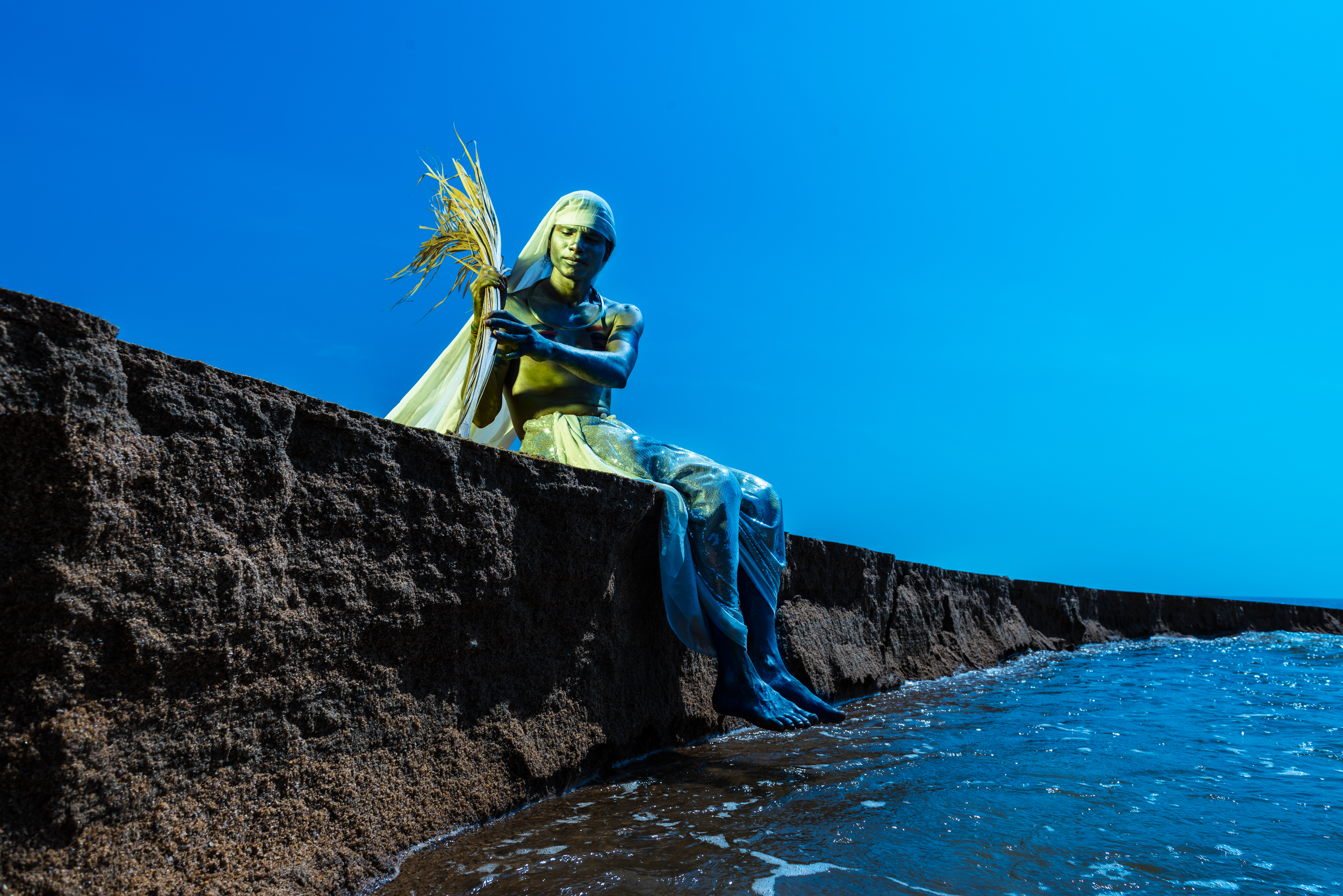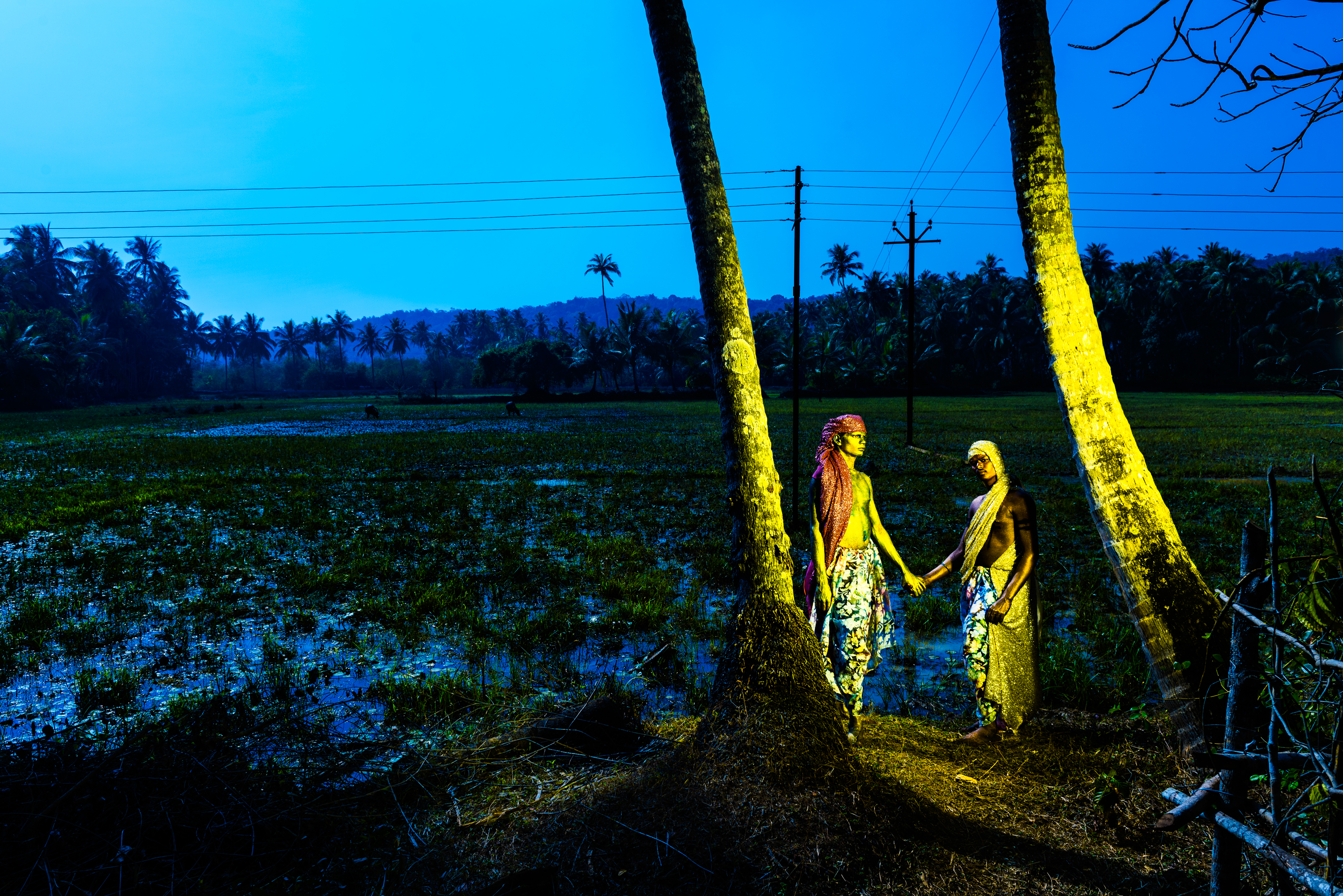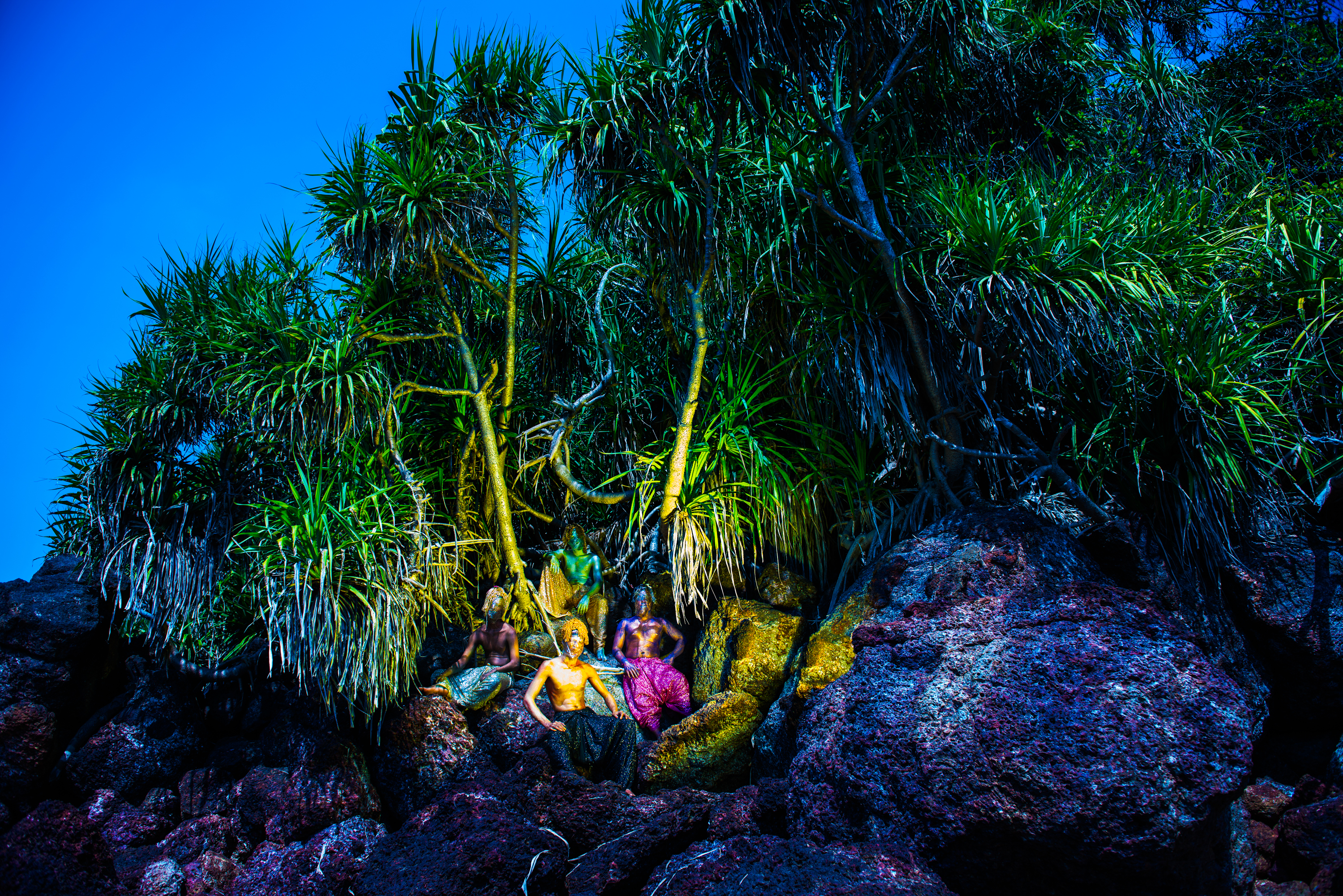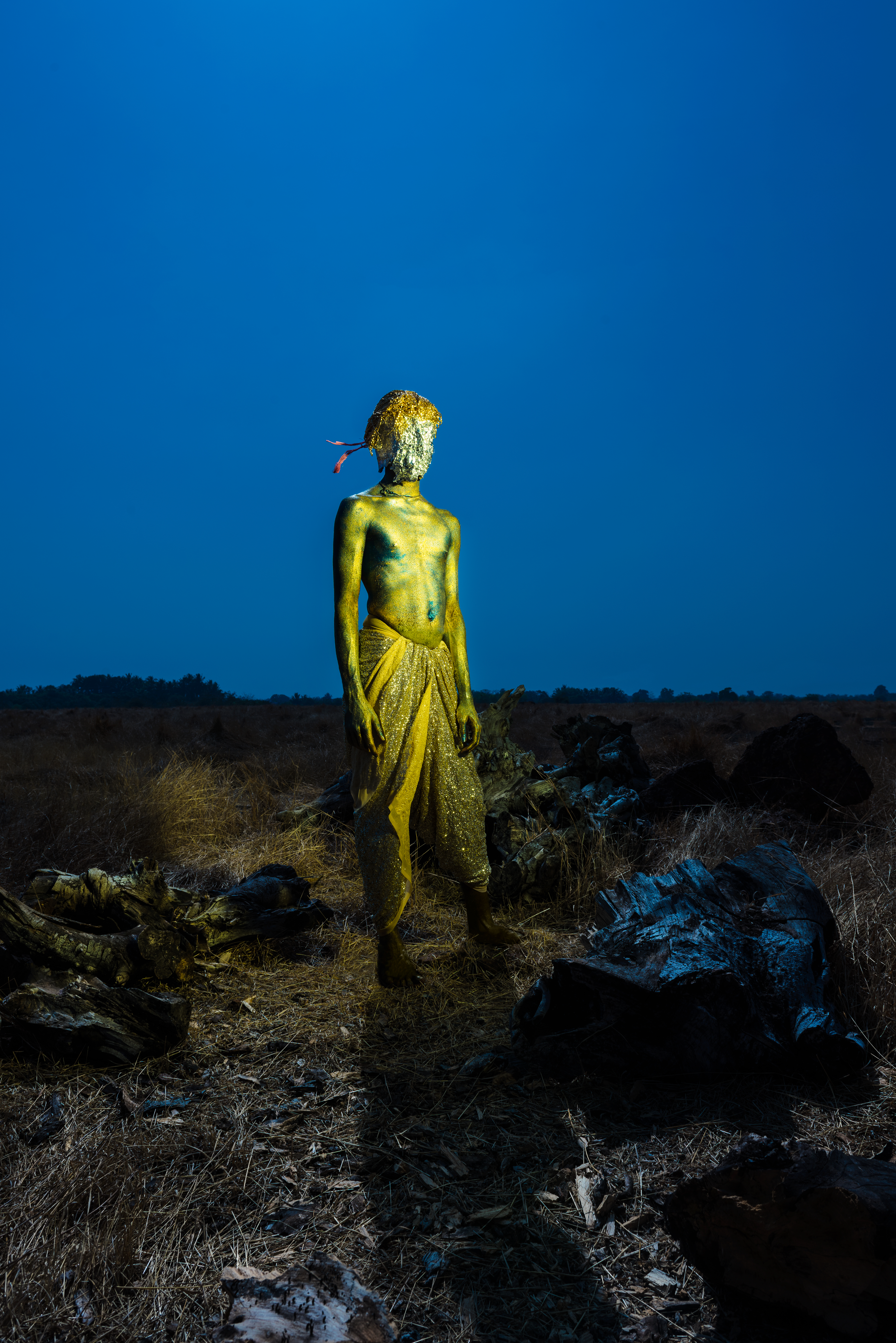Sandeep Dhopate’ s Elysium magnetically attracts our gaze. But what the young Indian photographer created is not only a canvas of surreal beauty. This series, impregnated with symbolism, bears primordial questions on divinity, humanity and nature.
For Sandeep Dhopate, there is no otherworld. Beyond life on earth there is no promised land; the real Elysium is the very world we live in. To make his point, the photographer creates heaven on earth using staged portraiture. For him, the religious idea of the hereafter has made humanity lose its way, its unity and its respect for the planet. “Our planet is the real promised land, the real elysian field, and it is being destroyed bit by bit for the hope to selfishly gain something no one has seen or been to”, he tells us. His photography is a performance piece: he creates the unreal to better tackle the faults of reality.
A powerful symbolism
The intent of the photographer is to create strong visuals to attract the viewer and then induce him to reflect upon his message. His images are clean and simple, so as not to allow any interference between the symbol and the public. Nothing in the frames is left to chance. The homogenous look of the subjects aims to point out the collective identity of humans as a species that transcends their selfish individuality. The glitter represents greed, the jewelry symbolizes hunger for power and the crowns the human desire for supremacy.
“The reality is presented as otherworldly, but in truth it can’t be more real. What appears surreal is actually a sarcastic remark on society today”.
A local but universal language
The photographer’s critique of society is inclusive and cross-cultural. But in order to express it, he uses the codes of his native land. The choice of colors and the flat rendering of some frames are a clear reference to ancient Indian art. The serie’s aesthetics strongly recalls Indian sculpture, paintings, dance and drama. The colors play a fundamental role, and are used to express human emotions. “I draw my inspiration from this history of India to express a universal truth,” he says. For him photography is in fact a universal language, a way to communicate across borders, to share his profound and provoking questions with humanity as a whole.
